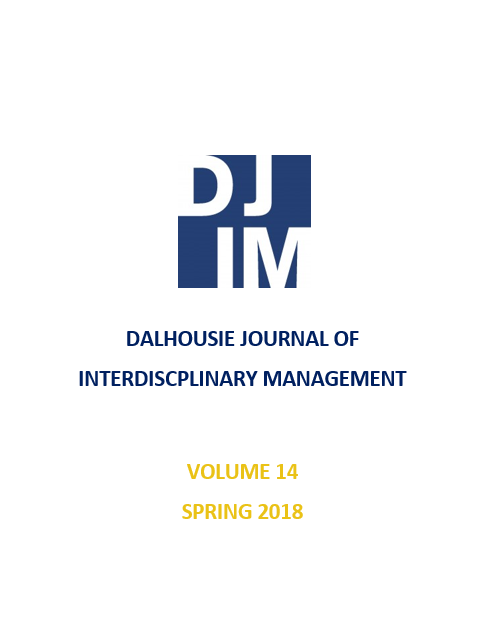Chasing Aces: Asexuality, Misinformation and the Challenges of Identity
DOI:
https://doi.org/10.5931/djim.v14i0.6926Keywords:
Asexuality, LGBTQ , identity, informationAbstract
Asexuality is a deeply misunderstood and little-known sexual orientation. This is partly due to misconceptions and marginalization of asexual people, and partly by a lack of information about the orientation. This paper outlines the misconceptions of the ‘causes‘ of asexuality, namely Hypoactive Sexual Desire Disorder (HSDD), abuse, and religious abstinence. These causes are shown to be invalid due to the key element of self-identification in determining an orientation.; nevertheless, they persist in society because little is known about the nature of asexuality. The facets of the asexual orientation are then discussed: levels of sexual attraction, sexual desire, and romantic orientation, displaying the complex attempt to define asexuality, made even more difficult by a lack of sources concerning these facets.. Finally, the tension between the LGBTQ+ community and asexuals is discussed in terms of the debate about including asexuals in this community, with the groups often speaking at cross-purposes. It becomes clear that being asexual requires a complex navigation of territory, and this problem is exacerbated at every step by a lack of information. It is therefore crucial that this informational gap is addressed at each of these three critical areas in order to build a more complete societal grasp of asexuality, and to create a vibrant, open community for those who identify as asexual.References
AVEN [The Asexual Visibility and Education Network] (n.d.-a). General FAQ. Retrieved November 13, 2016, from http://www.asexuality.org/home/?q=general.html
AVEN [The Asexual Visibility and Education Network]. (n.d.-b). Overview. Retrieved November 13, 2016, from http://www.asexuality.org/home/?q=overview.html
Bogaert, Anthony F. (2006). Toward a conceptual understanding of asexuality. Review of General Psychology, 10(3).
Brotto, L. A., Yule, M. A., & Gorzalka, B. B. (2015). Asexuality: an extreme variant of sexual desire disorder? Journal of Sexual Medicine, 12(3), 646–660. https://doi.org/10.1111/jsm.12806
Canning, Dominique A. (2015). Queering asexuality: Asexual-inclusion in queer spaces. McNair Scholars Research Journal, 8(1), Article 6.
Cerankowski, K. J., & Milks, M. (2010). New Orientations: Asexuality and its implications for theory and practice. Feminist Studies, 36(3).
Decker, J.S. (2015). The invisible orientation: An introduction to asexuality. New York: Skyhorse Publishing.
Gressgà¥rd, R. (2013). Asexuality: From pathology to identity and beyond. Psychology & Sexuality, 4(2), 179–192. https://doi.org/10.1080/19419899.2013.774166
Halifax Public Libraries. (n.d.) Search keywords: asexuality, across library system. Included non-fiction and fiction results.
MacNeela, P., & Murphy, A. (2015). Freedom, invisibility, and community: A qualitative study of self-identification with asexuality. Archives of Sexual Behavior, 44(3), 799–812.
Miller, S. (2015). A queer literacy framework promoting (a)gender and (a)sexuality self-determination and justice. English Journal, High School Edition, 104(5), 37–44.
Pinto, S. A. (2014). ASEXUally: On being an ally to the asexual community. Journal of LGBT Issues in Counseling, 8(4), 331–343. https://doi.org/10.1080/15538605.2014.960130
Downloads
Published
Issue
Section
License
Papers published in the Dalhousie Journal of Interdisciplinary Management must be the original, unpublished work of the author. Contributors are responsible for obtaining any copyright clearances required in relation to their work.
Authors submitting a paper to the Dalhousie Journal of Interdisciplinary Management automatically agree to grant a limited license to DJIM if and when the manuscript is accepted for publication. This license gives permission for DJIM to publish the paper in a given issue and to maintain the work in the electronic journal archive. DJIM also submits issues to institutional repositories and Open Access repositories.
Contributors agree to each reader accessing, downloading, or printing one copy of their article for their own personal use or research. All other copyrights remain with the author, subject to the requirements that any republication of the work be accompanied by an acknowledgement that the work was first published in the Dalhousie Journal of Interdisciplinary Management and that the DJIM Editorial Chair must be notified of any republication of a work first published in DJIM.
Dalhousie Journal of Interdisciplinary Management
c/o School of Information Management
Faculty of Management
Dalhousie University
Kenneth C. Rowe Management Building
6100 University Avenue
Halifax, Nova Scotia B3H 3J5
Canada
Email: djim@dal.ca
Authors should recognize that, because of the nature of the Internet, the publisher has no control over unauthorized copying or editing of protected works.


